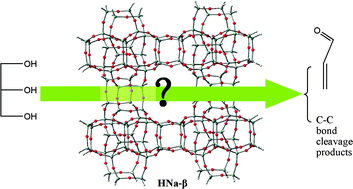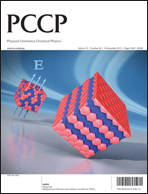A combined experimental and computational study of the catalytic dehydration of glycerol on microporous zeolites: an investigation of the reaction mechanism and acrolein selectivity†
Abstract
The catalytic activity and the acrolein selectivity for liquid phase glycerol dehydration on β zeolites (HNa-β-k) were found to be dependent on the reaction temperature as well as on the amount of acid sites on the zeolites. An increase in the reaction temperature favors the acrolein selectivity. The acrolein selectivity increases with the Na+/H+ ratio and the glycerol conversion decreases with it so that a maximum acrolein yield is obtained when a certain amount of acidic sites are replaced by non-active Na+ sites. The computational results indicate that 3-hydoxylpropanal (HPA) is an important intermediate that determines the final product selectivity. The relative rates of the different reaction pathways for HPA can be affected by the amount of water molecules involved in its homogeneous reaction. Based on the reaction mechanism proposed, it was hypothesized that smaller pores reduce activity but increase selectivity to acrolein, and results of the H-MFI zeolite were consistent with this hypothesis. Our work provides important insight into the overall landscape of the reaction mechanism and can be used to help design reaction systems that have good acrolein selectivity for the liquid phase glycerol dehydration reactions.


 Please wait while we load your content...
Please wait while we load your content...